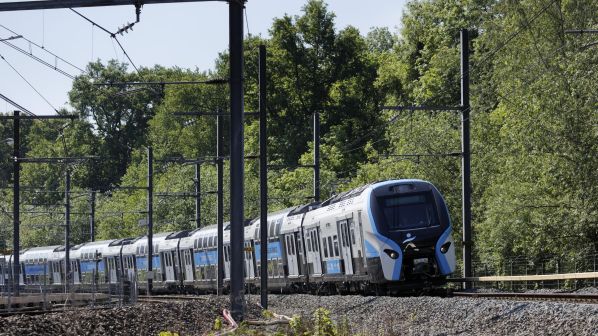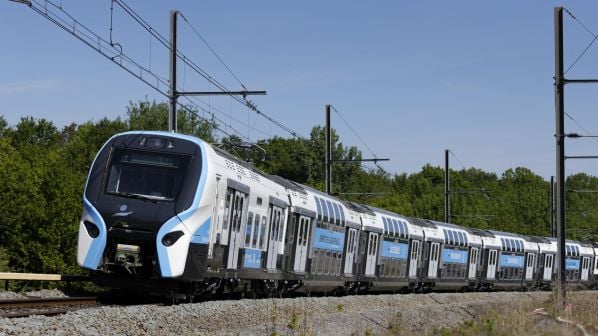AN audit by French National Railways (SNCF) of a €3.75bn order with Alstom for 255 Next Generation (NG) 140km/h EMUs for lines D and E of the Paris RER has revealed that the new trains will enter service two years later than planned.
Testing of five pre-series trains is currently underway and 71 trains from the first part of the order worth €1.55bn were due to enter service on the 190km Line D and 52.3km Line E by the end of this year. However, only one of these trains is equipped for tests with NExTEO cab signalling system which will be installed on the extension of Line E currently under construction to Nanterre-la-Folie, which is due to be completed by the end of 2022, and to Mantes-la-Jolie in 2024, following the completion of the East-West Express Link (EOLE) extension.
Alstom spokesman, Mr Philippe Molitor, told IRJ that despite Alstom staff being fully mobilised on the project since 2017, several elements forced the delivery of the first trains to be postponed, in particular the great technical complexity of this new equipment, integration of NexTEO, changes in the specifications during the project and the impact of the health crisis on production, testing campaigns and suppliers.

“Taking all of these elements into account, a robust schedule was built and audited by an external firm,” Molitor says. “It incorporates more unforeseeable events and gives Alstom a clear and firm commitment to certification tests, as well as to the delivery of the trains. We are determined to stick to this schedule and have organised ourselves accordingly.”
The first part of the order placed in January 2017 comprises 56 112m-long and 15 130m-long trains. The 112m-long trains consist of two single-deck end cars with four double-deck intermediate coaches and have capacity for 1563 passengers. The longer trains have five double-deck intermediate coaches and capacity for 1860 passengers. The trains will serve around 1.23 million passengers per day following full deployment and are expected to alleviate pressure on the core sections of the RER network’s lines A, B and D by around 10-15%. The first trains were revealed in September 2020.
The contract, the largest ever to be financed by Île-de-France Mobility, was awarded by SNCF, the operator of the lines. SNCF will use 130 of the trains on Line D and 125 on Line E.

